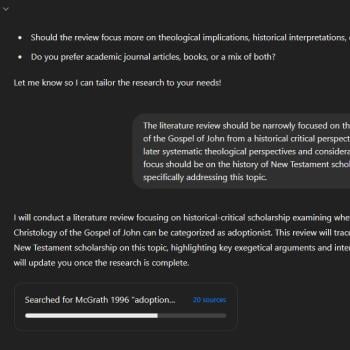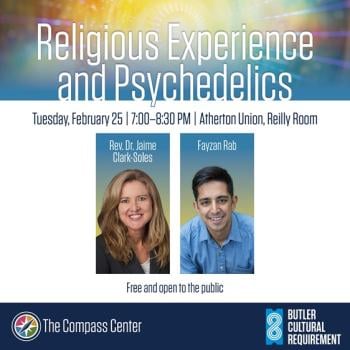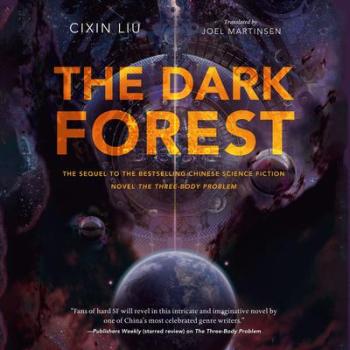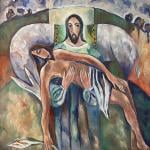
After lunch, Risto Uro spoke about the use of cognitive science in the study of early Christianity. He began by paying hommage to his own Doktorvater, Heikki Räisänen, who advocated a religious studies approach to New Testament studies. He then moved on to contextualize his argument against the backdrop of the study of the phenomenon of religion in recent years from the perspective of cognitive studies, biological evolution, neuroscience, and other interrelated scientific methods, and the diminishing of the gulf between the humanities and the natural sciences. In the second half of his paper, Uro applied the approach of cognitive historiography to the figure of John the Baptist. I will clearly need to read his brand new book about ritual and Christian beginnings! In his paper, Uro drew a comparison with the role of ritual in the activity of the Indian guru known as Amma or Ammachi. In her case as in John’s there is both a close continuity with existing ritual, and something distinctive that appeals to at least a subset of the public to a greater extent than the older and more widespread one. Behavior and psychology need to be part of our study of ancient rituals, and not just the written statements about them by members of an educated elite. People are sometimes unwilling or unable to articulate precisely why they engage in particular rituals, while in others they are ad hoc secondary interpretations offered after the fact. Uro emphasized that cognitive science is not an alternative to classic historical and source-critical approaches. In the discussion afterwards, Judith Lieu asked whether we have clear enough evidence about what John’s baptism was like to be able to offer cognitive scientific interpretations thereof.
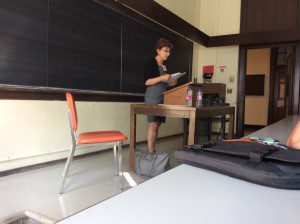 After another coffee break, we had the first round of simultaneous short papers. I chaired the session in which Adele Reinhartz spoke. Her paper’s title was “The Lyin’ King? Duplicity and Christology in the Gospel of John.” She took “WWJD?” as her starting point, noting its assumption that Jesus’ behavior consistently serves as a good role model. She then moved on to the question of whether the Gospel of John is interested in ethics and offers Jesus as a model to emulate in interpersonal relationships. Her view is that it does not. John’s Jesus violates ancient norms for ethical behavior towards one’s mother, siblings, and friends. The author subordinates such concerns to Christology and “the Word becoming flesh – warts and all.” Her approach was neither historical nor theological but literary, and focused on the incident when Jesus lies to his brothers. The manuscript history shows that scribes were disturbed by the text. The text critical arguments of Chrys Caragounis, and exegetical arguments of D. Moody Smith, C. K. Barrett, Rudolf Schnackenburg and others, show that the discomfort has not gone away. Reinhartz, however, argued that the narrator’s comment shows that he recognized the lie but was untroubled by it. In John 7, deceit plays a similar role as in well-known stories about the patriarchs and Moses in the Torah, and of course Jesus is related and compared to these figures throughout John. While Jerome Neyrey has warned against anachronistic evaluation of ancient behavior in terms of our moral sensibilities, Reinhartz drew attention to the condemnation of lying in both Jewish and Greco-Roman literature, as well as elsewhere in the New Testament itself. And within John, the truthfulness of the Samaritan woman is praised, and the truthfulness of the testimony of the Beloved Disciple and Jesus himself is emphasized. The double Amen is often translated as “I tell you the truth.” Jesus’ opponents are condemned as liars (among other things), while Jesus is said to be not just true but “the Truth.” Reinhartz suggested that the evidence shows that the author views Jesus as Truth in a Christological sense, and not in terms of his ethical behavior in interpersonal relations. Interestingly, Jesus is accused by some in John 7 of deceiving people and leading them astray. The background of the term in the Jewish scriptures, however, focuses on the leading of people into the worship of other gods. Also interesting is that this incident leads into a story that shows Jesus as fulfilling the expectation that the Messiah would be hidden.
After another coffee break, we had the first round of simultaneous short papers. I chaired the session in which Adele Reinhartz spoke. Her paper’s title was “The Lyin’ King? Duplicity and Christology in the Gospel of John.” She took “WWJD?” as her starting point, noting its assumption that Jesus’ behavior consistently serves as a good role model. She then moved on to the question of whether the Gospel of John is interested in ethics and offers Jesus as a model to emulate in interpersonal relationships. Her view is that it does not. John’s Jesus violates ancient norms for ethical behavior towards one’s mother, siblings, and friends. The author subordinates such concerns to Christology and “the Word becoming flesh – warts and all.” Her approach was neither historical nor theological but literary, and focused on the incident when Jesus lies to his brothers. The manuscript history shows that scribes were disturbed by the text. The text critical arguments of Chrys Caragounis, and exegetical arguments of D. Moody Smith, C. K. Barrett, Rudolf Schnackenburg and others, show that the discomfort has not gone away. Reinhartz, however, argued that the narrator’s comment shows that he recognized the lie but was untroubled by it. In John 7, deceit plays a similar role as in well-known stories about the patriarchs and Moses in the Torah, and of course Jesus is related and compared to these figures throughout John. While Jerome Neyrey has warned against anachronistic evaluation of ancient behavior in terms of our moral sensibilities, Reinhartz drew attention to the condemnation of lying in both Jewish and Greco-Roman literature, as well as elsewhere in the New Testament itself. And within John, the truthfulness of the Samaritan woman is praised, and the truthfulness of the testimony of the Beloved Disciple and Jesus himself is emphasized. The double Amen is often translated as “I tell you the truth.” Jesus’ opponents are condemned as liars (among other things), while Jesus is said to be not just true but “the Truth.” Reinhartz suggested that the evidence shows that the author views Jesus as Truth in a Christological sense, and not in terms of his ethical behavior in interpersonal relations. Interestingly, Jesus is accused by some in John 7 of deceiving people and leading them astray. The background of the term in the Jewish scriptures, however, focuses on the leading of people into the worship of other gods. Also interesting is that this incident leads into a story that shows Jesus as fulfilling the expectation that the Messiah would be hidden.
In the discussion afterwards, Harold Attridge brought the Stoic tradition into the picture, and what Epictetus aays about sages. He also suggested that not accompanying his brothers from Galilee might connect with the theme of not knowing where Jesus is from. Paula Fredriksen asked how the Church Fathers interpret the story. Anni Hentschel noted how the narrator deals with Jesus’ unethical behavior in relation to Lazarus and his sisters in John 11. Dennis MacDonald brought up literary tricksters.
I found myself wondering whether Jesus might have been viewed by the Gospel author as, like God, above such ethical matters, just as God could be depicted as sending a lying spirit to deceive a king (1 Kings 22:22). I also wondered whether Jesus might be an example of the appropriateness of deception in order to preserve oneself in a context of persecution.




